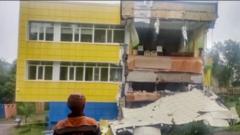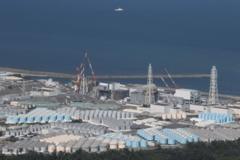Every winter, as Japan’s northern region starts to thaw, a committed group of citizens led by Tomoko Kobayashi embarks on a significant task—tracking radiation levels in their community. This initiative, ignited by the Fukushima nuclear disaster of 2011, aims to confront the lingering threat of radioactive fallout that remains in the wake of the catastrophic event.
Using devices akin to Geiger counters, Ms. Kobayashi and her companions traverse the landscapes surrounding Odaka, moving from one stopping point to the next, collecting vital data. They measure gamma rays to pinpoint areas where radioactive particles, released during the meltdowns at the Fukushima Daiichi nuclear plant, are still present. The group constructs color-coded maps displaying varying levels of radiation, which Ms. Kobayashi prominently displays at her family-run inn for guests and community members alike.
“The government wishes to declare the disaster over, but for us, it’s far from resolved,” notes Ms. Kobayashi. At 72, she has taken on a role she never anticipated, choosing to stay in a place where, despite the lifting of evacuation orders, the threat of radiation looms over daily life. Her inn, which has been in her family for generations, has transformed into a hub of knowledge where the community can understand potential hazards in their environment.
As she prepares her readings, questions about safety ring true for her and her neighbors: "Can we eat this fruit? Is it truly safe to live here?" The only answer lies in their diligent measurements. By filling the gap left by inadequate government monitoring, these citizen scientists strive to reclaim their community from the shadows of past calamities, pushing back against the anxiety that radiates from history.
Using devices akin to Geiger counters, Ms. Kobayashi and her companions traverse the landscapes surrounding Odaka, moving from one stopping point to the next, collecting vital data. They measure gamma rays to pinpoint areas where radioactive particles, released during the meltdowns at the Fukushima Daiichi nuclear plant, are still present. The group constructs color-coded maps displaying varying levels of radiation, which Ms. Kobayashi prominently displays at her family-run inn for guests and community members alike.
“The government wishes to declare the disaster over, but for us, it’s far from resolved,” notes Ms. Kobayashi. At 72, she has taken on a role she never anticipated, choosing to stay in a place where, despite the lifting of evacuation orders, the threat of radiation looms over daily life. Her inn, which has been in her family for generations, has transformed into a hub of knowledge where the community can understand potential hazards in their environment.
As she prepares her readings, questions about safety ring true for her and her neighbors: "Can we eat this fruit? Is it truly safe to live here?" The only answer lies in their diligent measurements. By filling the gap left by inadequate government monitoring, these citizen scientists strive to reclaim their community from the shadows of past calamities, pushing back against the anxiety that radiates from history.









